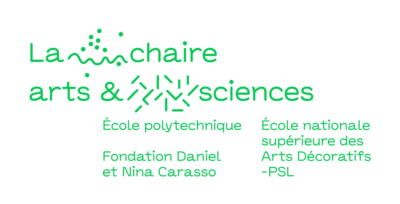Projet : Mist Collector
Néphélographe, Impression de brouillard, Ana Rewakowicz, Camille Duprat & Jean-Marc Chomaz.
Mist Collector is a research project, lead by the École polytechnique, that addresses the issue of diminishing sources of fresh water in the world, especially in parts where there is scarce access to groundwater and rain, and looks at alternative methods of obtaining water from fog. One of the current global propositions largely accepted today is the Raschel mesh that is placed in a vertical plane in the path of a wind carrying fog. However this net mesh produces clogging and presents a problem of drainage. In our research we discovered that a change of paradigm was necessary to obtain larger efficiencies; thus, we have been focusing on a forest of flexible threads replacing the standard meshed net and exploring new shapes and structures. Our investigation has concentrated on understanding the principles of water droplet coalescence on parallel, flexible fibres, on production of artificial fog/mist and on the development of aerodynamic structures that could improve water collection.
Nephelograph (Mist Impressions) has been developed as one of the Mist Collector projects. Nephelograph (Mist Impressions) is a cloud machine that deals with the production of larger quantities of artificial fog and permits ‘scribing’ different formations of fog clouds. It consists of multiple, stackable units made from clear plexi with submerged ultrasonic misters that produce a current of fog bouncing against an obstacle (a leaning transparent plaque) to create a turbulent mass of mist. This ‘cloud’ is then pushed by the ventilators through honey comb filters creating an unified, homogeneous, well-controlled fog flow at the exit.
Nephelograph comes from artistic and scientific research on harvesting water from fog and takes its name from the Greek language for clouds (fog is a low to the ground cloud). Working together with composer Daniel Schorno, our goal is to create a multi-
sensory environment, where viewers are able to ‘touch’ the clouds and participate in an auditory dialogue with them, offering a reflection on the laborious journey awaiting humanity in the pursuit of water supplies. In our collaboration with children we invite them to write haiku(s) for the clouds using the 16-unit machine grid as a ‘scriber’ that forms specially designed typographic letters of the alphabet. These poems projected letter by letter create messages that even though not totally legible echo a collective desire to dream about better future.

Répondre
Se joindre à la discussion ?Vous êtes libre de contribuer !